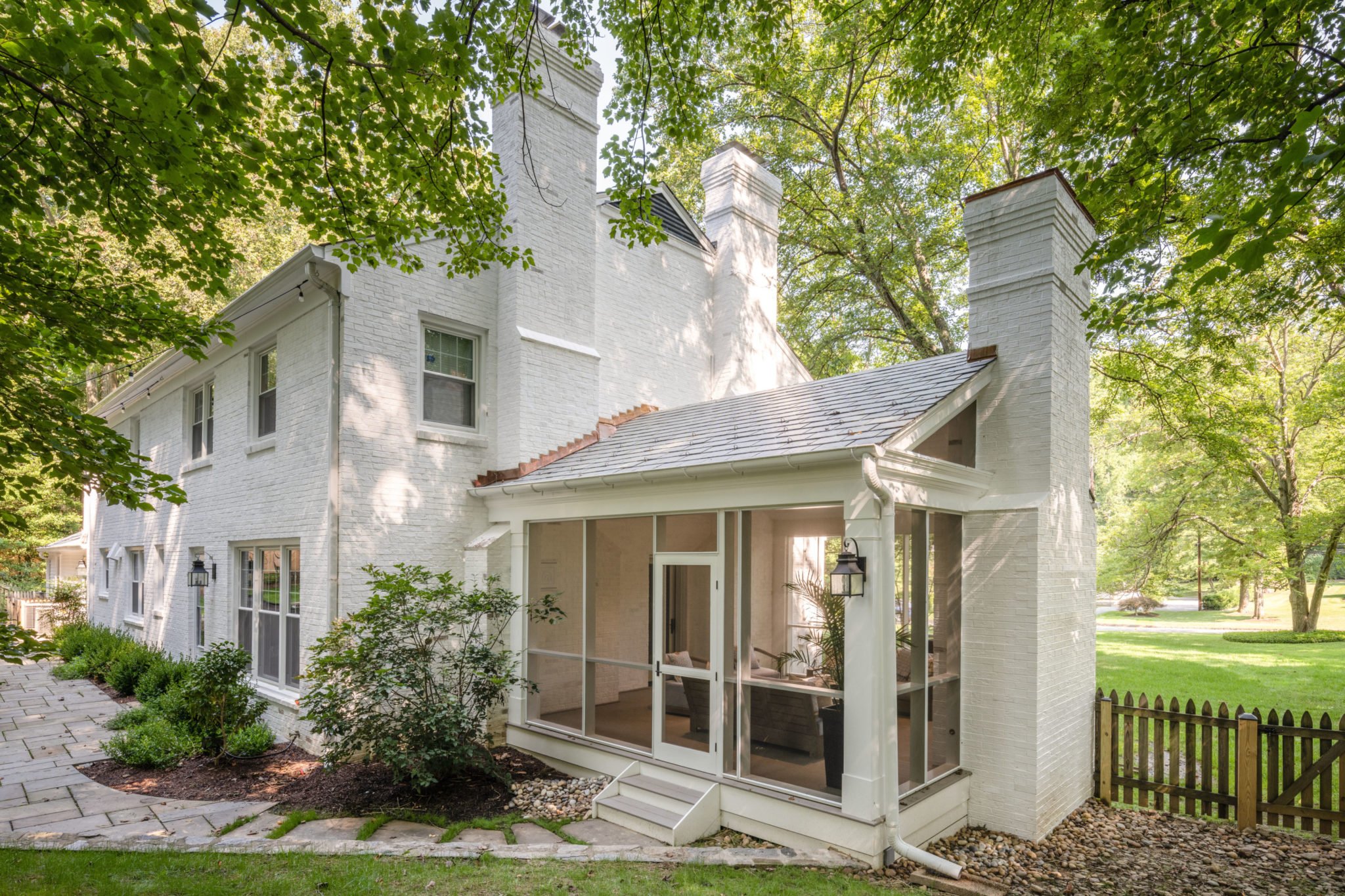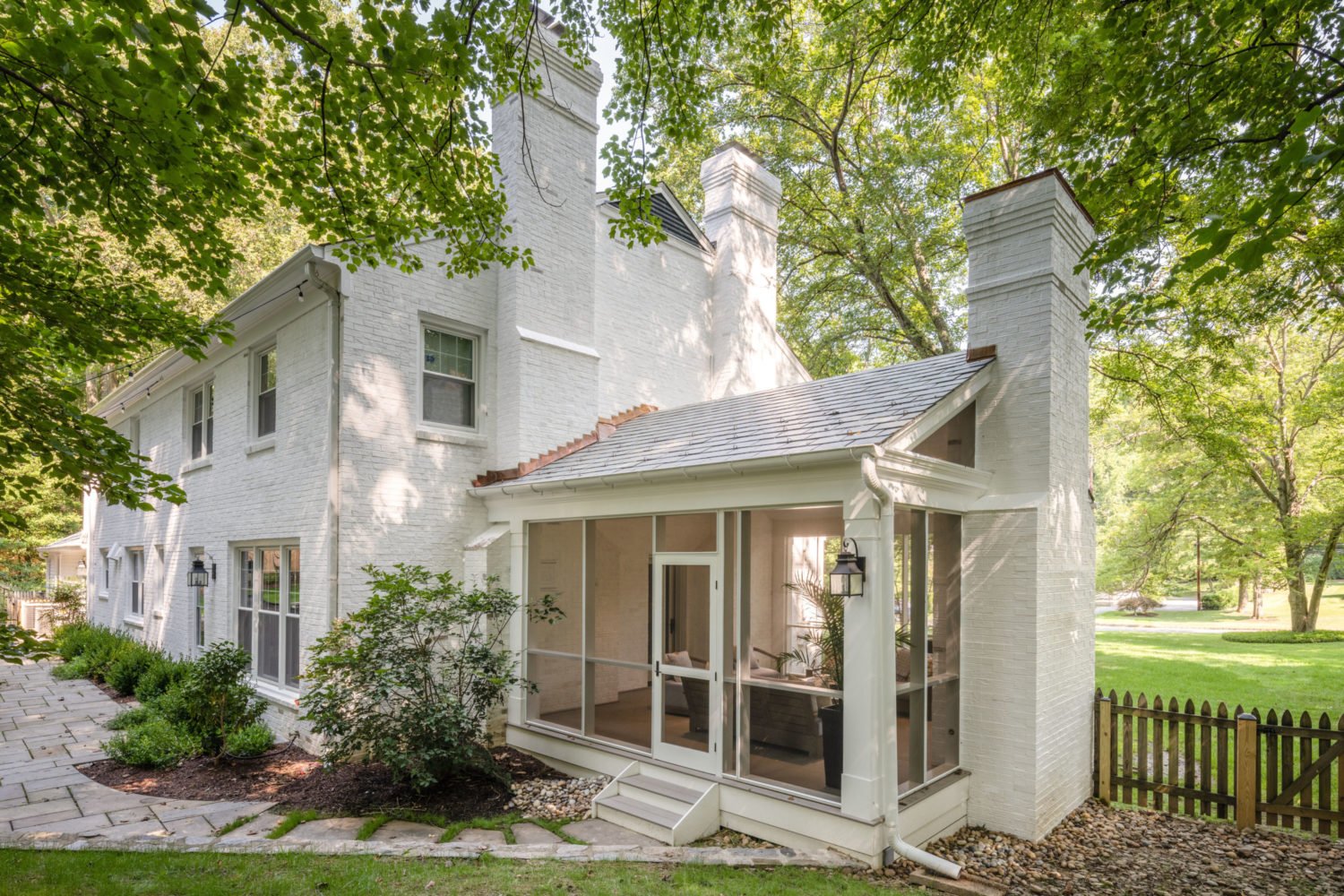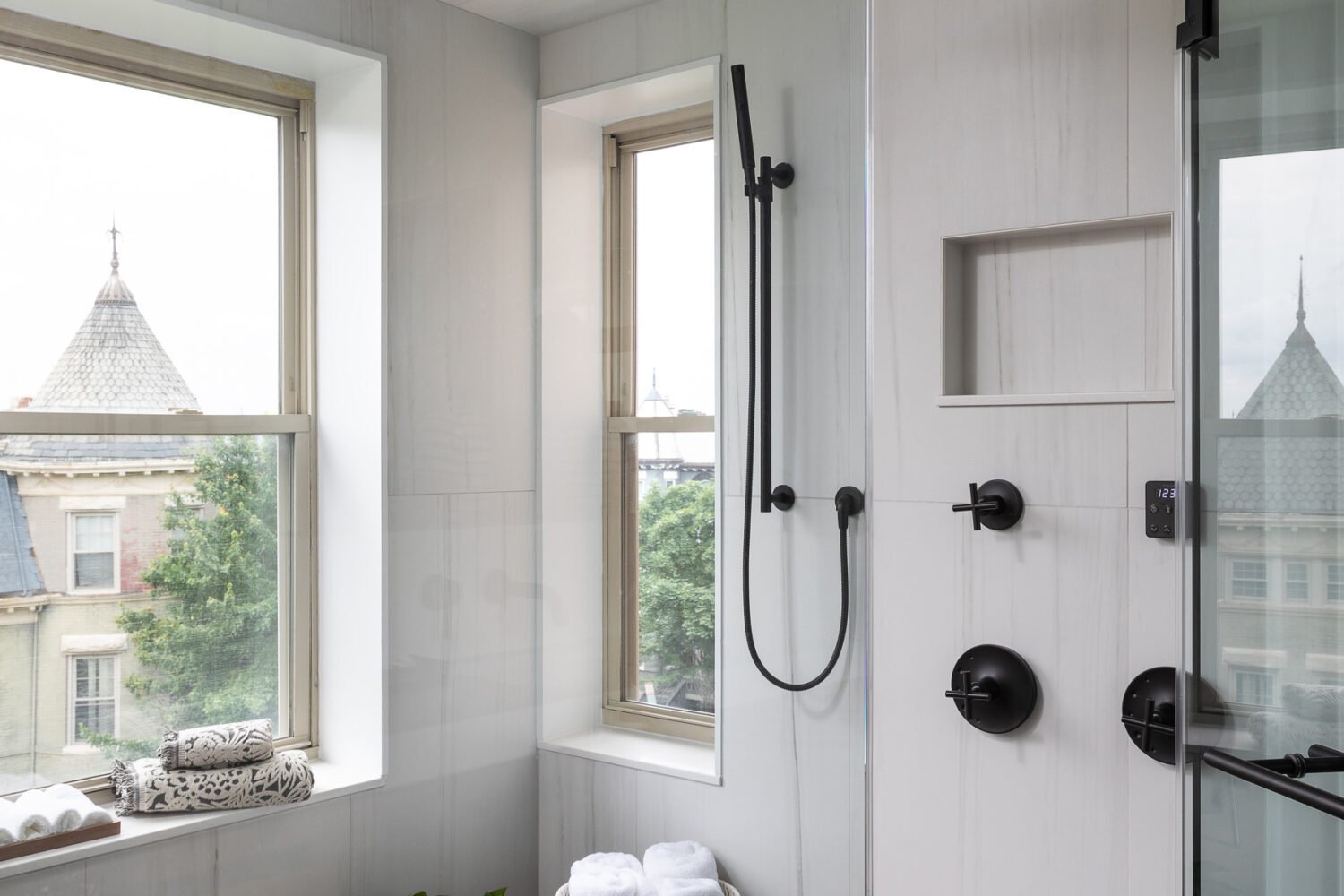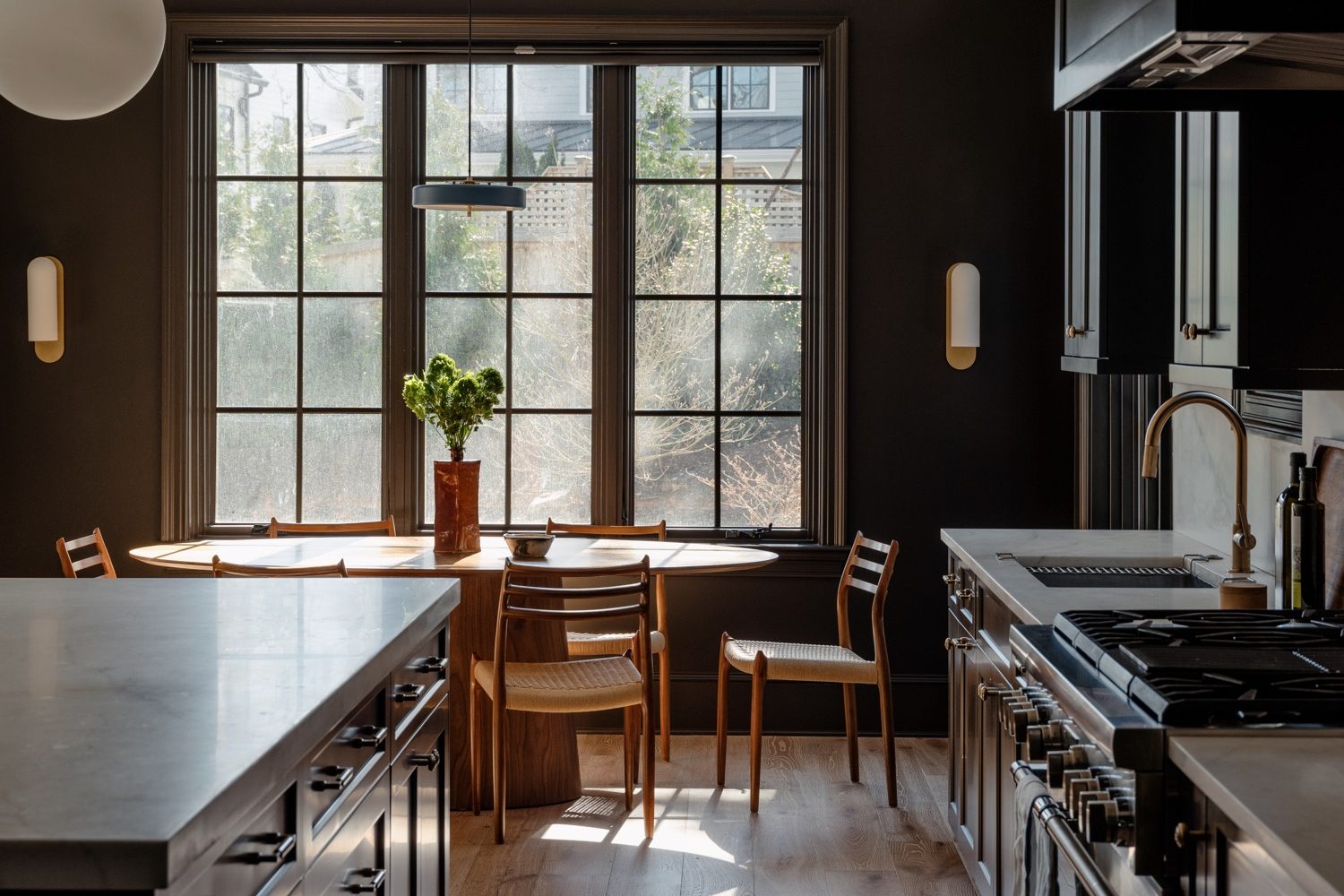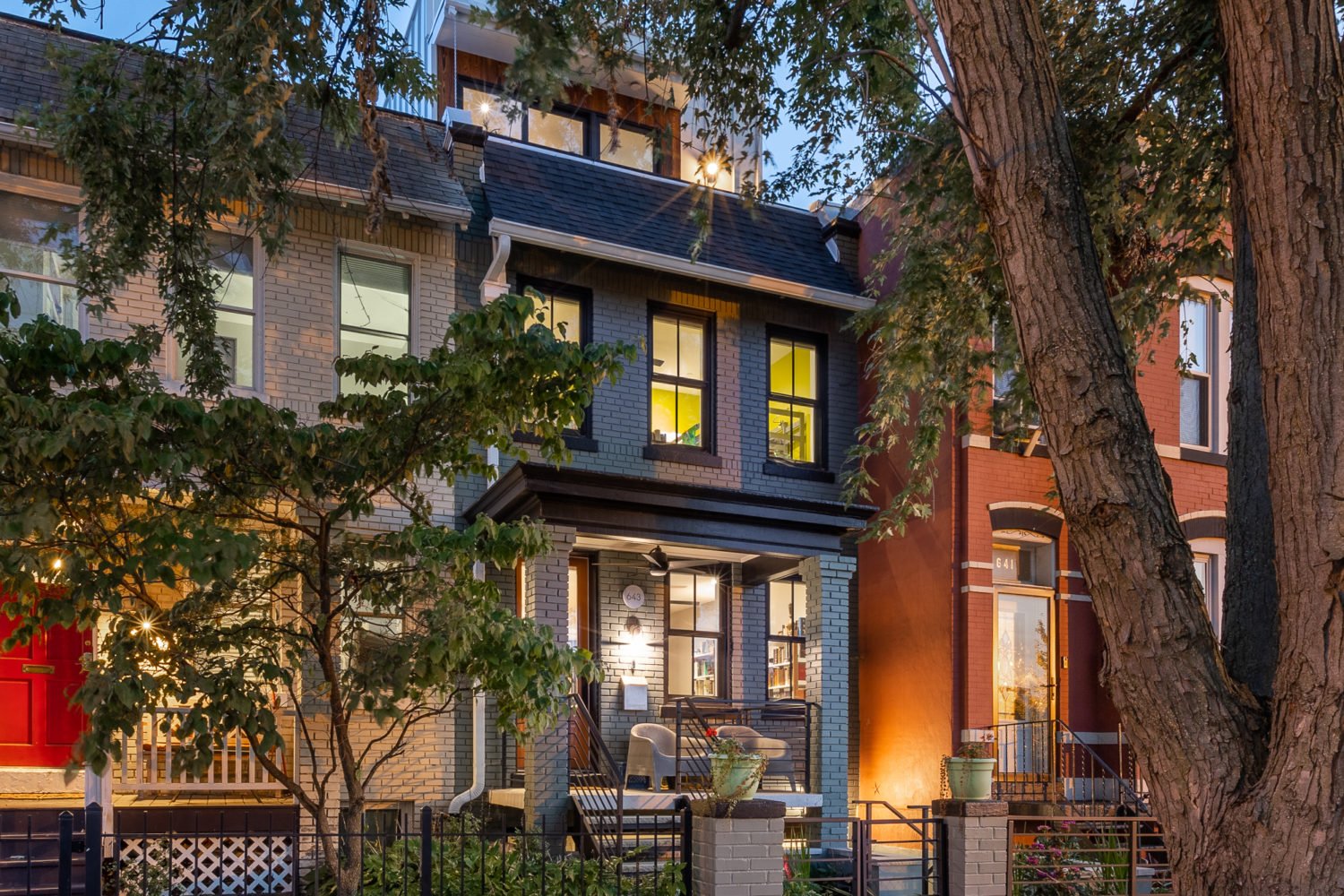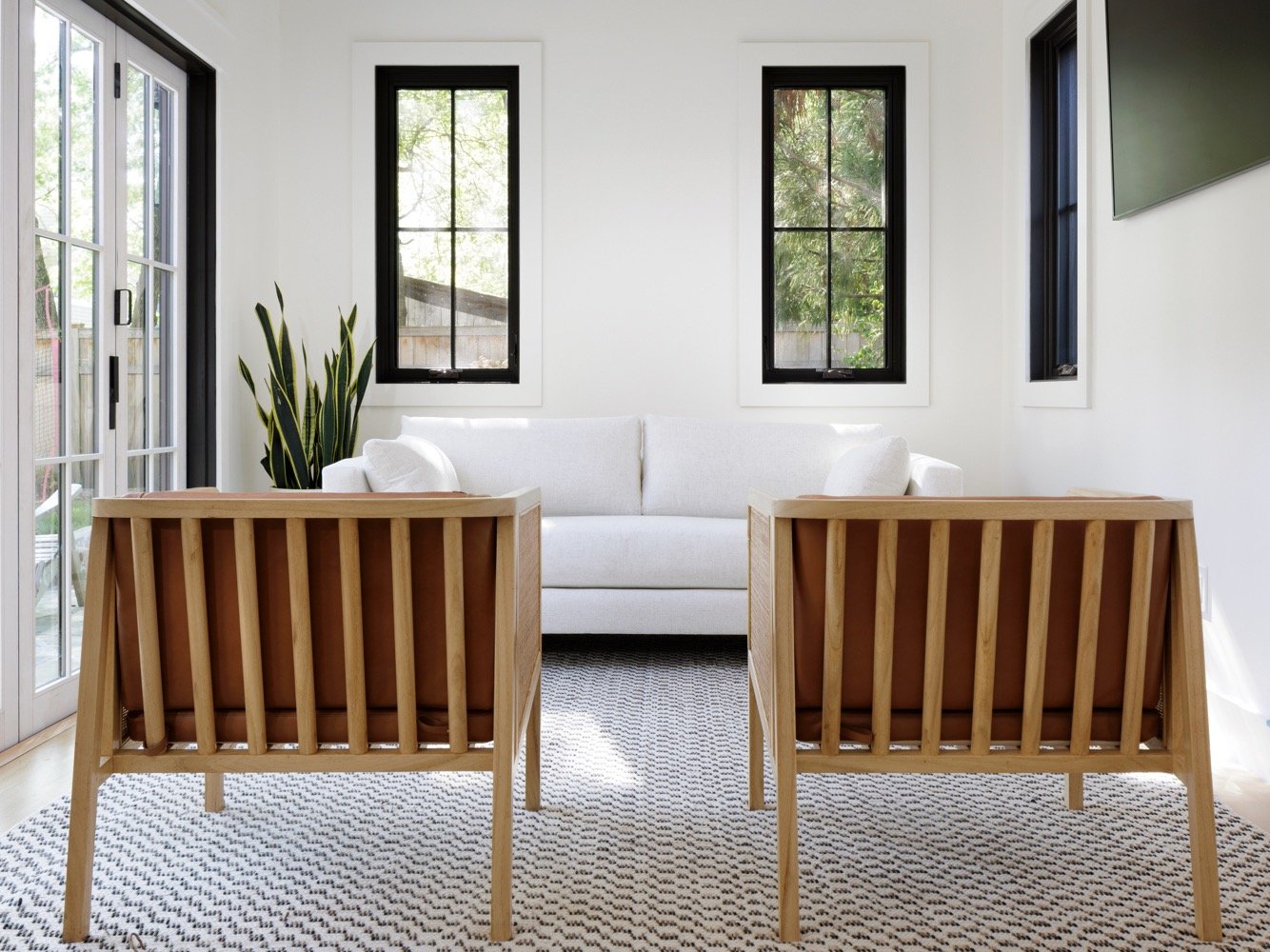Expanded Colonial
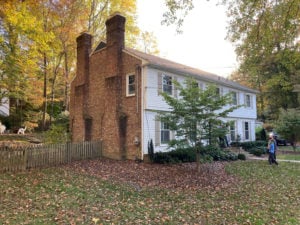
“The thing that everyone wants since Covid,” says Anthony Wilder, “is a screened porch, a puppy, and maybe a pool.” The architect checked at least one of those boxes for clients in Bethesda who sought more space to entertain in their traditional Colonial. Attaching the porch to the side of the house—where there was enough yard to accommodate it—meant the addition would become part of the front facade. So Wilder conceived its chimney, which echoes the two on the main structure, to help the porch look cohesive with the rest of the home. He designed the whole space to be easily upgradable into a three-season room—a request he says is common once homeowners see how much time they end up spending in their screened porches.
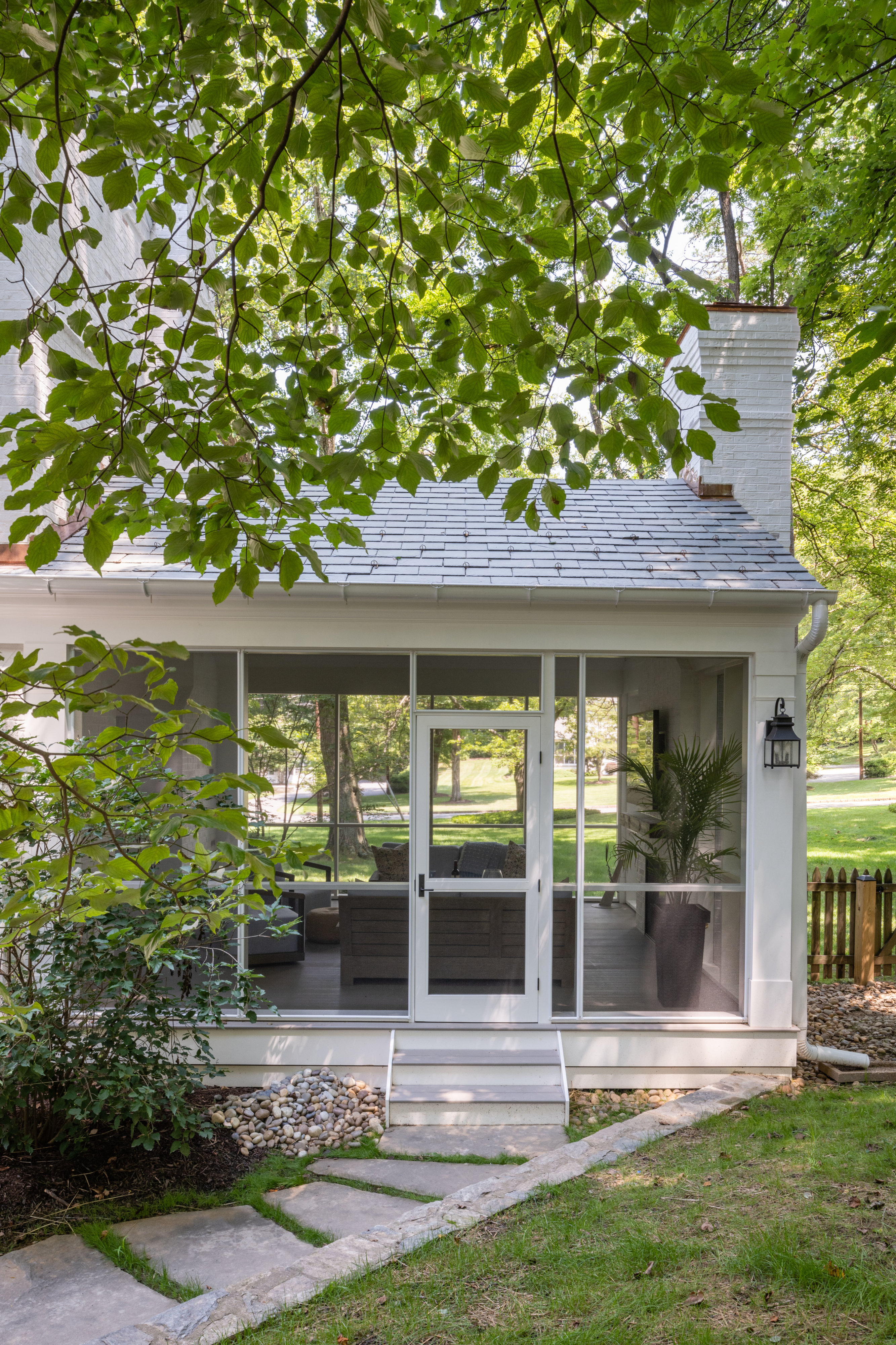
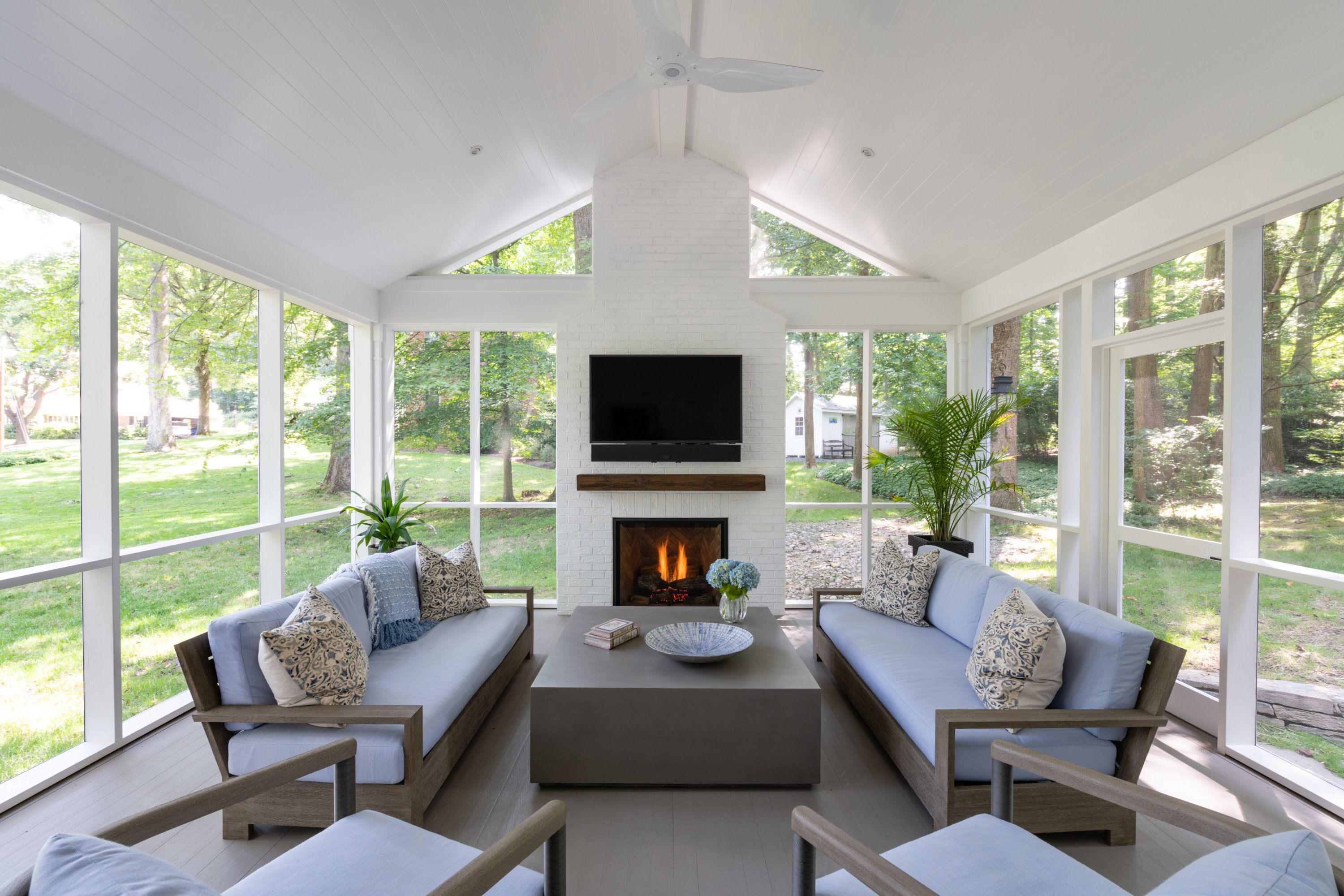
Modern Renovation
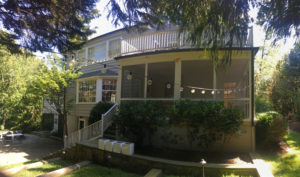
This serene space in Chevy Chase was part of a comprehensive remodel and addition completed last fall. It sits outside a new kitchen, above an expanded basement, and below a new owner’s suite. But even much simpler screened porches, says its architect, Catherine Fowlkes of Fowlkes Studio, are more complicated than they appear. “The big difference,” she explains, “is all of the components are visible, whereas in a structure that has walls, things can be hidden.” In other words, meticulous attention must be paid to the details.
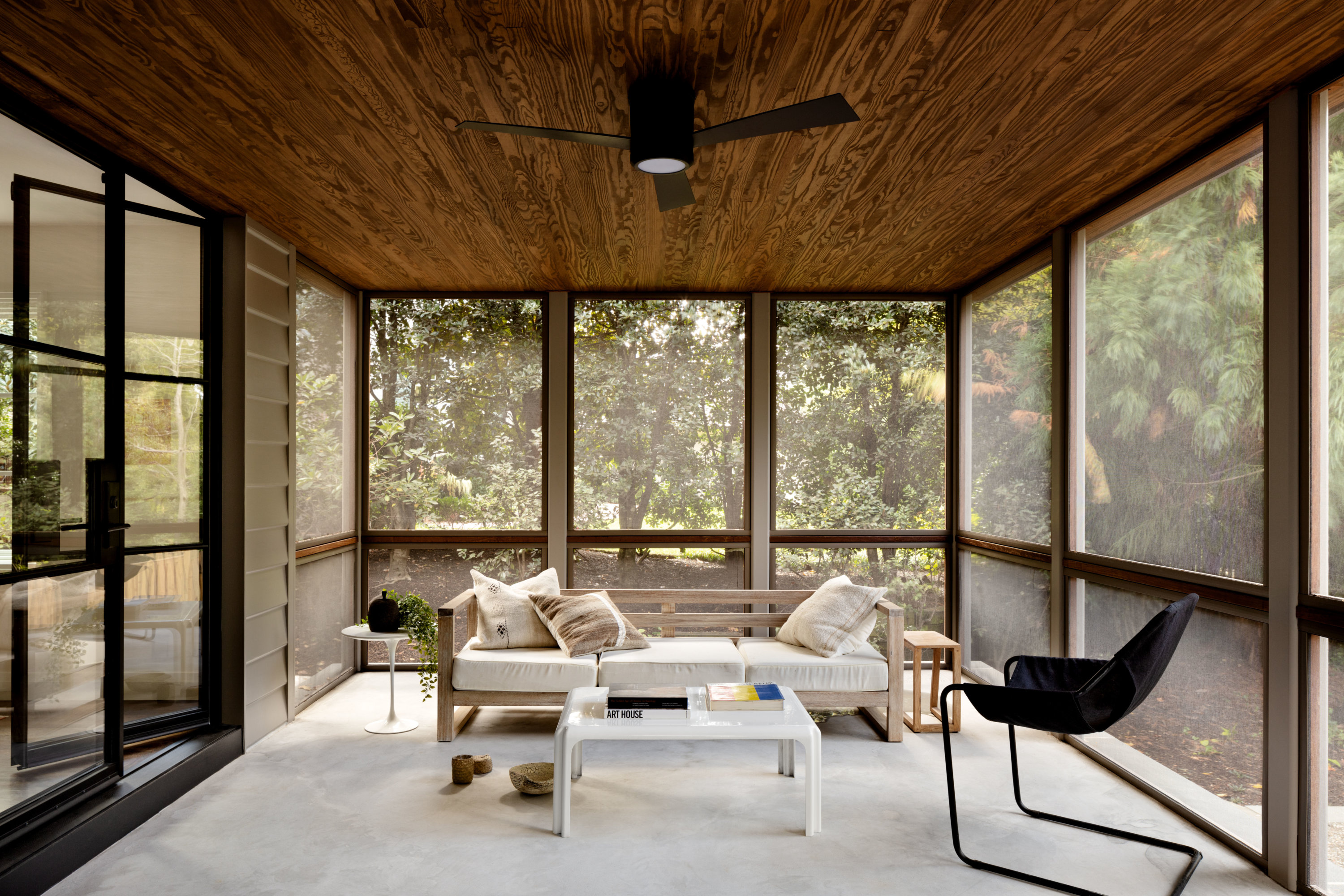
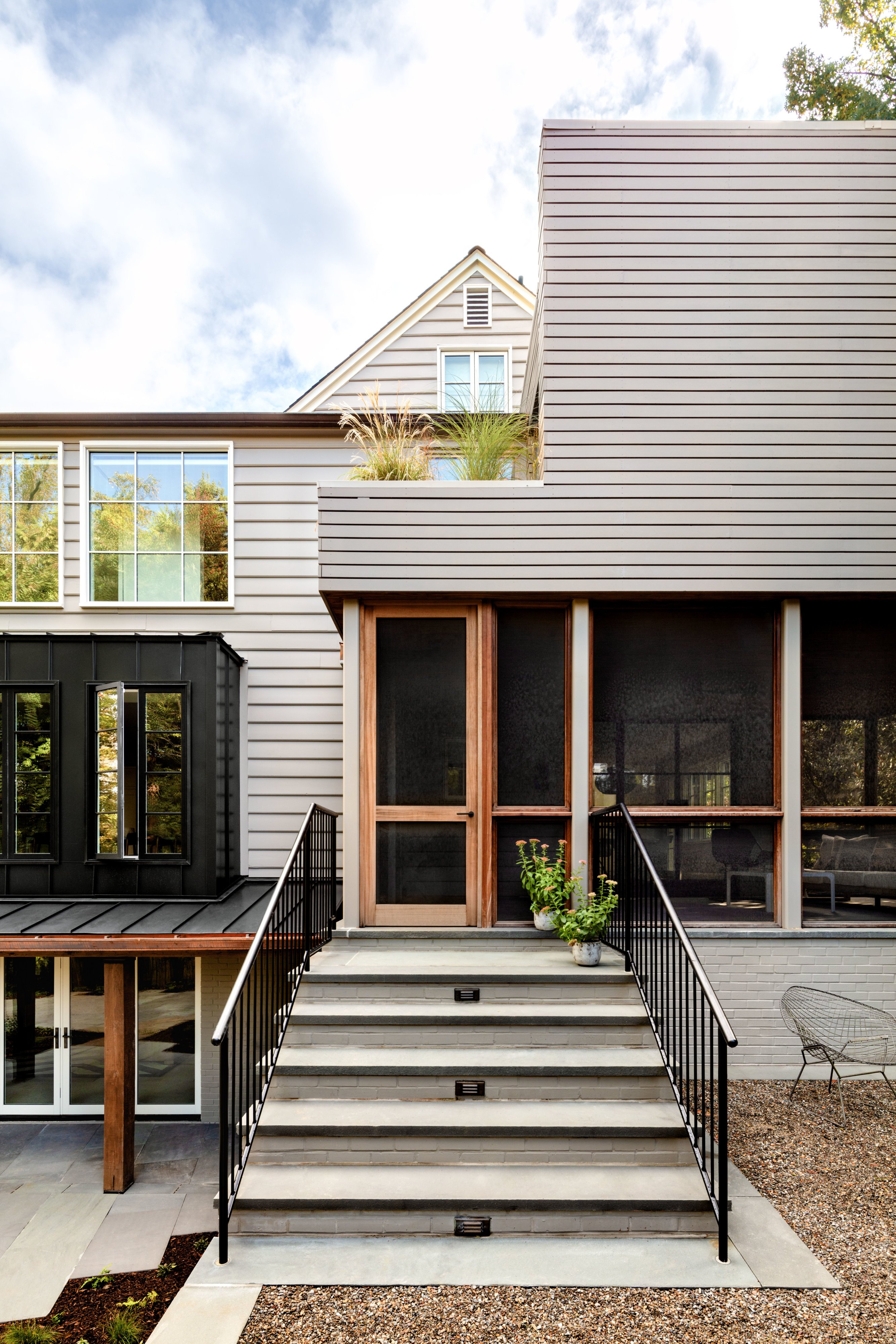
Carport Conversion
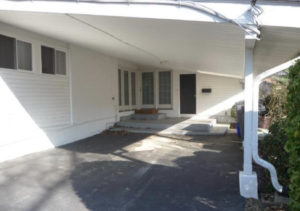
The carport of this midcentury-modern home in Alexandria was begging to be repurposed. At some point, a section of the concrete floor had been raised three steps up, presumably to create an elevated patio. But it wasn’t exactly an inviting place to hang out, and the uneven levels meant you could no longer park a car inside.
The owners enlisted Marks-Woods Construction Services to reimagine the awkward spot as a sleek indoor/outdoor room. They gave the house a new front stoop, driveway, and walkway, too. In all, says principal Byron Woods, the project—which wrapped in the fall of 2020—took three months and cost about $50,000.
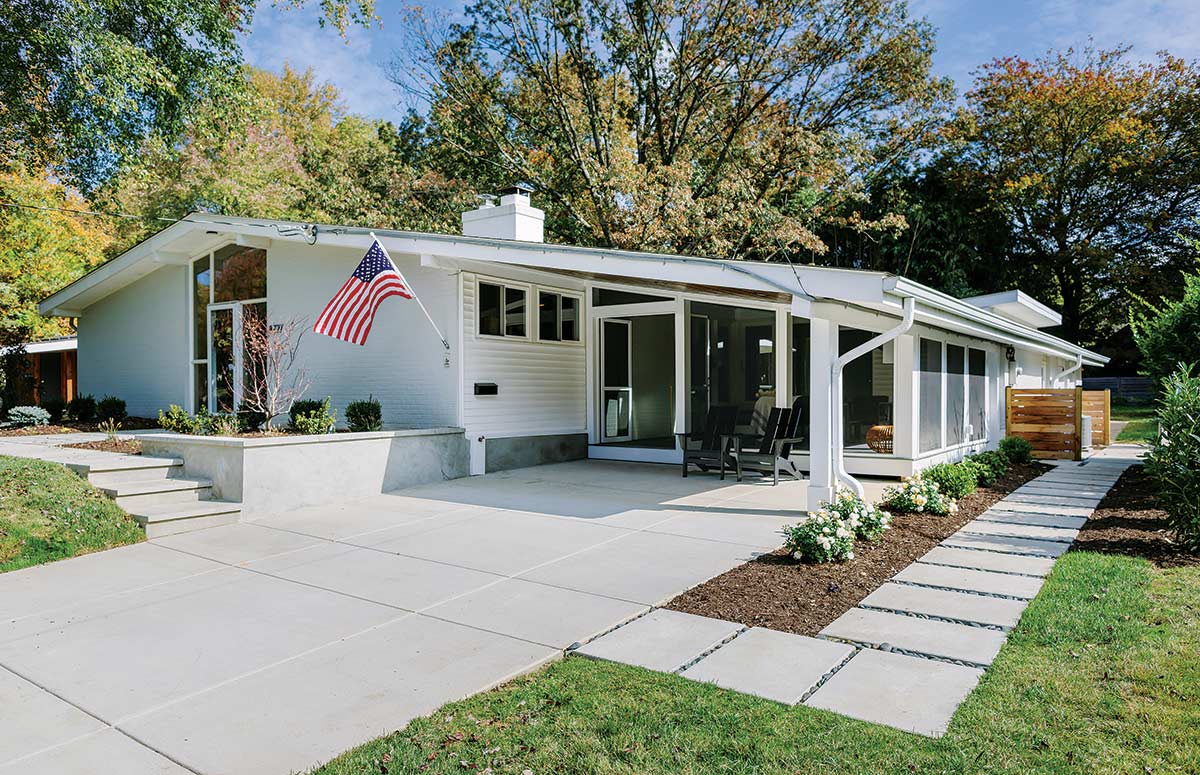
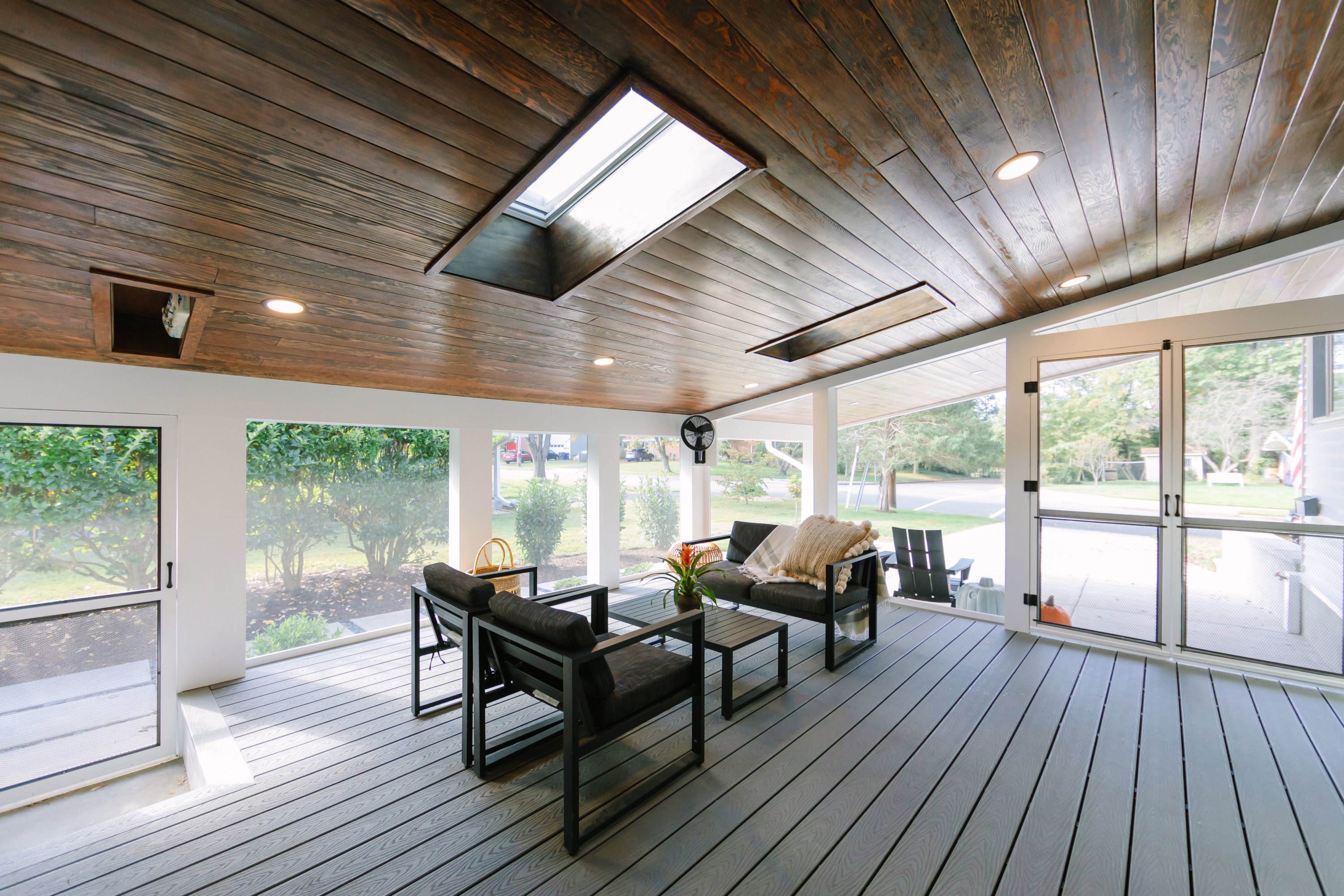
Porch Talk
More intel to consider if a screened porch is on your wish list
1. You can build a basic 15-by-15-foot porch made of pressure-treated lumber for as little as $25,000, according to Byron Woods, principal of Marks-Woods Construction Services.
But from there, costs easily mount. Popular finishes such as composite decking, skylights, and beadboard ceilings, plus railings and other necessities, will add thousands to the bill.
2. If you want heat in your porch, options range from low-cost plug-in units and propane-powered patio heaters (like what you see at restaurants) to heated floors, ceiling-mounted heat lamps, and baseboard heat.
3. Architect Anthony Wilder warns against adding a screened porch onto a wall with windows. Homeowners, he says, don’t realize how dark this can make a house’s interior until it’s too late.
4. While they’re great at keeping out bugs, screens don’t filter pollen. If your yard produces tons of it, you might consider adding windows.

